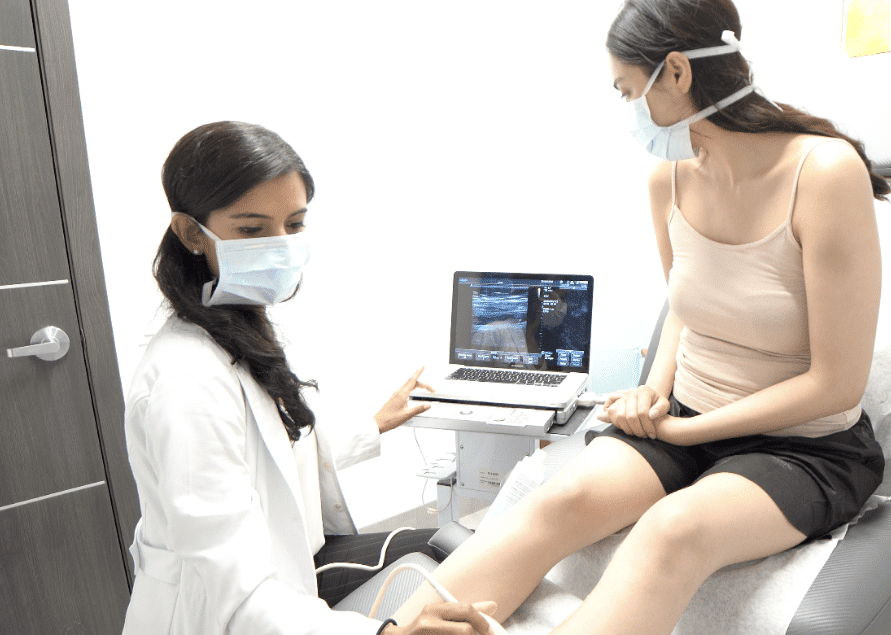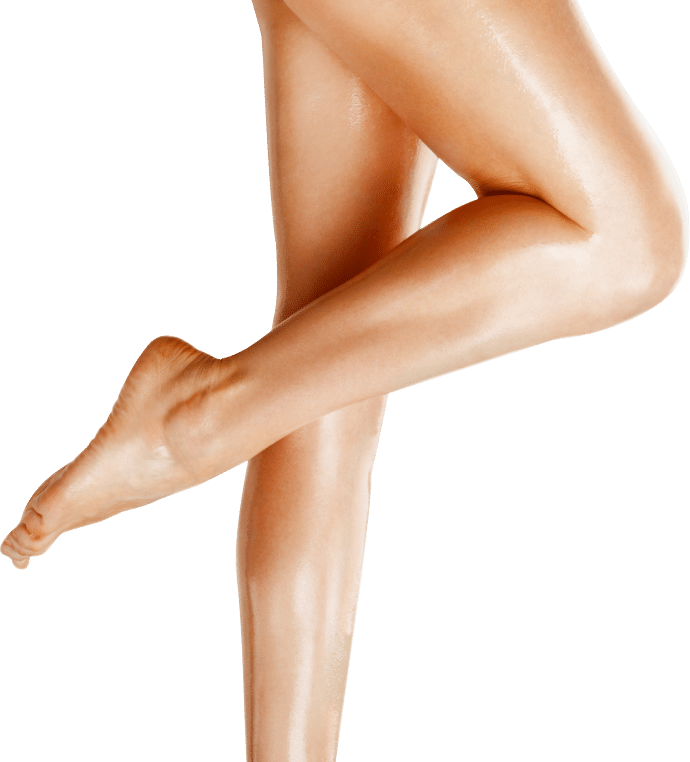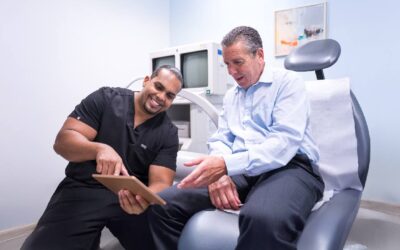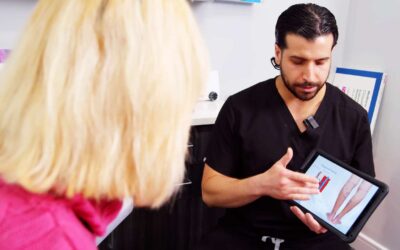Can Laser Treatment Remove Varicose Veins?

Can laser treatment remove varicose veins?
Endovenous laser ablation, also known as endovenous laser treatment, is one of the most popular and effective vein treatments available. Endovenous laser treatment is a minimally invasive procedure for chronic venous insufficiency, the root cause of varicose veins. Instead of removing the varicose veins, endovenous laser treatment addresses the root cause of the problems, following which additional treatments are necessary for varicose veins. To understand how endovenous laser treatment works, you must understand the correlation between varicose veins and chronic venous insufficiency.
Chronic venous insufficiency is the root cause of most vein problems. It’s a medical condition wherein your vein valves are damaged. In healthy veins, the valves act as one-way doors ensuring one-way blood flow towards the heart, often against the force of gravity. When your vein valves collapse or malfunction, gravity forces blood to flow backward and accumulate in the leg veins, leading to spider veins, varicose veins, and other vascular conditions. Since varicose veins are caused by vein disease, an effective varicose vein treatment should address the root cause first.
Endovenous laser treatment is the first line of treatment for patients diagnosed with chronic venous insufficiency. If you have vein disease, the vein doctor will administer a minimally invasive endovenous laser treatment to seal or collapse the diseased saphenous vein responsible for your vein problems. Once the diseased vein is collapsed, blood reroutes into healthier leg veins, restoring optimal blood circulation to the heart. After endovenous laser treatment, the vein doctor may perform an ambulatory phlebectomy to remove the varicose veins from the skin’s surface.
Endovenous laser treatment doesn’t remove all the varicose veins from the skin’s surface. But it’s the first line of treatment in making sure your varicose veins don’t return later.
How is endovenous laser ablation performed?
Your endovenous laser ablation starts with a thorough evaluation and diagnosis. The vein doctor examines your leg veins, discusses your symptoms, reviews your health history, and administers an ultrasound diagnostic test, known as duplex ultrasound. During the duplex ultrasound, the vein doctor will use ultrasound energy to visualize the direction of blood flow in your leg veins, which will reveal the presence or absence of chronic venous insufficiency. If you have vein disease, the vein doctor may decide to perform endovenous laser treatment.
Endovenous laser ablation is an in-office procedure performed under local anesthesia. The vein doctor administers local anesthesia to ensure comfort, following which they make a small incision on the skin’s surface. The incision mark is an entry point for a specialized catheter with a laser fiber that’s driven into the diseased saphenous vein under ultrasound guidance. Once the catheter is lodged in place, the vein doctor delivers tumescent anesthesia to protect the surrounding tissues. The vein doctor activates the catheter to generate laser energy and destroy the diseased vein.
The entire procedure should conclude within 30 to 60 minutes. After performing endovenous laser treatment, the vein doctor will apply pressure on your legs while you stand up. You will receive a clear set of aftercare guidelines, following which you can resume your daily activities.
Benefits of endovenous laser treatment:
- Minimally invasive procedure that only involves one small incision on the skin’s surface.
- Performed under local anesthesia, so there’s minimal pain and discomfort.
- No harsh side effects after endovenous laser treatment.
- No major complications after endovenous laser treatment.
- Concludes within 30 to 60 minutes, making it the perfect lunchtime procedure.
- Can resume most of your daily activities and work immediately after the treatment.
- Addresses the root cause of varicose veins, spider veins, and other vein problems.
- Prevents varicose veins from returning after the treatment.


BOOK AN APPOINTMENT
Do you have any symptoms? Consult now with one of the Best Vein Specialist in New Jersey
Drawbacks of endovenous laser treatment:
- Causes more post-treatment discomfort than radiofrequency ablation.
- Performed using tumescent anesthesia, which may cause post-treatment swelling.
- Ablating the diseased vein involves a small risk of nerve injury.
- Skin discoloration is a common side effect of endovenous laser treatment.
What happens after endovenous laser treatment?
After your endovenous laser treatment, you will have to wear ACE bandages and compression stockings. The ACE bandages have to be worn for approximately 24 hours, and the compression stockings have to be worn for 72 hours continuously. After the first 72 hours, you can start wearing compression stockings for a few hours a day for a few weeks. You should avoid strenuous workouts and heavy lifting for a few days, but you can resume most of your daily activities and work.
Endovenous laser ablation concludes within an hour and involves no downtime. You can resume most of your daily activities and work immediately after the procedure. In fact, most of our patients seek endovenous laser treatment during their lunch break at work, following which they resume their normal schedule. If you have any schedule constraints, please talk to our medical team — they will help you find the ideal time for your vein treatment.
How else can I treat varicose veins?
Endovenous laser treatment is one of the best minimally invasive procedures for chronic venous insufficiency, the root cause of most vein problems. Other reliable minimally invasive vein treatments include radiofrequency ablation, venaseal, and clarivein. Radiofrequency ablation is the same as laser ablation, but it involves using laser energy instead of radiofrequency energy. VenaSeal involves injecting a medical-grade adhesive into the diseased vein to seal its walls shut.
Ambulatory phlebectomy is the most effective minimally invasive procedure for varicose veins. During ambulatory phlebectomy, the vein doctor makes small incisions on the skin’s surface under local anesthesia, following which the varicose veins are manually extracted. Once the varicose veins are removed, the incisions are sutured closed and allowed to heal. This procedure ensures immediate results, and the incision marks gradually heal and dissipate.
NJ Vein Doctors
Meet our team of New Jersey Vein Treatment Specialists
Vein Treatments are covered by most major medical insurances, including Medicare. Call us today to verify your insurance for FREE >

Meet our Team of Top Vein Specialists in New Jersey
Contact us
CALL US
Speak instantly with one of our team members; they will answer any questions you may have regarding insurance coverage, booking an appointment and our vein treatment locations. (973) 946-8082
BOOK APPOINTMENT
Visit our Book Appointment page and instantly request an appointment at the New Jersey vein center. We offer Free Insurance Verification before your appointment.




